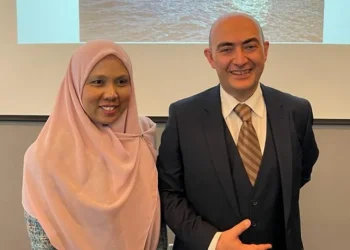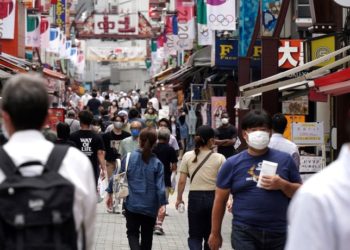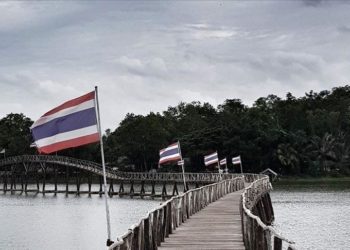 The Health Travel Industry Research Society of Thailand (HTRIS Thailand), a non-profit, private sector initiative, has been established with three goals focusing on Thailand’s international health travel industry, according to the research society ’s Secretary-General Chatree Niramitvijit.
The Health Travel Industry Research Society of Thailand (HTRIS Thailand), a non-profit, private sector initiative, has been established with three goals focusing on Thailand’s international health travel industry, according to the research society ’s Secretary-General Chatree Niramitvijit.
The Center, which serves as a media watchdog for Thailand’s medical tourism industry, publishes information that helps maintain the Kingdom’s predominance in the billion-dollar Asian industry, a regional market position now being challenged by competing Asian nations including Singapore, Malaysia, India and the Philippines.
The research society also compiles white papers comprising data from media and market responders, from international industry consultants, as well as from national industry leaders and government advisers.
“A white paper is an authoritative report or guide that often addresses issues and how to solve them. White papers are used to educate readers and help people make decisions, often used in politics and business,” according to Wikipedia. The Thailand HTI Research Society’s white papers are written reports of results and conclusions of its research collaboration activities.
The research society coordinates its activities with Thailand’s Ministry of Foreign Affairs, the Office of the Prime Minister, various government bodies, non-government organizations and representatives of the international medical travel industry.
“The Research Society’s role as industry watchdog and its goals of industry improvement and trade promotion meet an urgent need,” says Secretary-General Niramitvijit, a retired professional with a sales career embracing top media companies including the Reader’s Digest, Bangkok Post and Sing Sian Yit Pao.
“The society’s purpose is not only to analyze how the world market views the international service industries such as healthcare, travel, security, hospitality, wellness and tourism in Thailand,” says Mr. Nirmitvijit, “but also to ensure that the increasingly aggressive promotion from competing nations in the region do not overshadow Thailand’s primacy in the region as a favorite medical travel destination.”
“Thailand, Singapore, Malaysia, India and the Philippines are major destinations in the Asian medical tourism market,” says the 2009 Medical Tourism Market Report by Koncept Analytics. “Thailand is more popular among Western European medical tourists for cosmetic surgery. Singapore and India specialize in complex procedures with India having a cost advantage and Singapore a technology advantage.”
The Thai tourist industry earns some 540 billion baht (about 15.4 million US$) each year, comprising over 6 percent of Thailand’s gross domestic product (GDP) and employing over 7 percent of its work force. More recently however, statistics released by the Tourism Authority of Thailand shows that visitor arrivals went down 19% in Jan-March this year (3.2 million) compared to the same period last year.
Thailand’s Prime Minister Abhisit Vejjajiva is highlighting medical tourism to revive Thailand’s tourism industry during his personal visits and roadshows around the world. He underscored measures taken by his government including the waiving of all visa fees, the reduction of take-off and landing charges for airplanes, the lowering of entrance fees to national parks and the provision of travel insurance to foreign visitors.
Last week, Prime Minister Vejjajiva visited Suvarnabhumi Airport in Bangkok, the Kingdom’s capital, to investigate a series of incidents which, he said, “is causing immeasurable harm to the tourism industry” such as luggage theft, unlicensed tour guides, dishonest taxi drivers, extortion and pick-pocketing. Soon after, 205 unlicensed taxi drivers and tour guides were arrested and fined for operating illegally at the airport. The companies for passenger luggage check and transport are designing new measures to stop luggage theft.
“The government is also working on diversifying our tourism industry so that tourists can enjoy cultural excursions while, at the same time, being able to pursue other activities like spas, sports, medical check-ups and eco-tourism,” said Prime Minister Vejjajiva in a speech in Beijing in June this year.
Thailand, together with India and Singapore, currently dominate Asia’s medical travel market with a combined market share of around 90%, according to researchandmarkets.com. India is predicted to become Thailand’s biggest competitor, with the potential to capture up to 25% of the region’s medical travel market by 2012. South Korea and the Medical City in the UAE are part of this growing market.
In its Thailand Investment Review February-March 2009, the Board of Investment of Thailand (BOI) announced new government policies that “directly and immediately assist the tourism industry” including ad campaigns as well as measures to reduce tourism-related fees and service costs. Medium-term plans include expansion of the tourism and service sectors “by increasing the diversity of service businesses, adding value, enhancing competitiveness, and improving skilled labor in quality and language skills.
“The country has tremendous potential to serve as a center for international conferences, product exhibitions, and medical tourism, and the government is exploring how to maximize that potential,” says the BOI. “The government also plans to review all tourism-related laws to ensure that they are up to date and complementary.”













